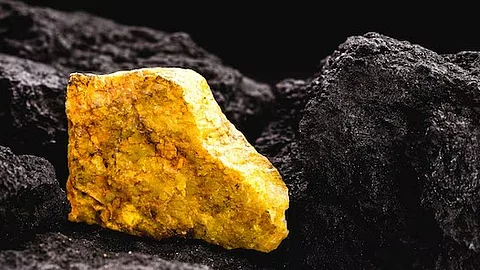
- NEWS
- the EDIT
- COMMENTARY
- BUSINESS
- LIFE
- SHOW
- ACTION
- GLOBAL GOALS
- SNAPS
- DYARYO TIRADA
- MORE

What is depleted uranium and what health risks does it pose for humans exposed to it?
Recently, the National Bureau of Investigation (NBI) uncovered the operations of a syndicate involving Uranium-238 and Uranium-235, materials used for energy production and weapons.
The NBI reported that an entrapment operation in Pasay in October resulted in the arrest of two individuals, with a third suspect nabbed in Cagayan de Oro a few days later.
Uranium, a radioactive metallic element, is found in trace amounts in rocks, soil, and water. It is commonly mined in countries like Australia, Canada, Kazakhstan, and Russia.
According to the International Atomic Energy Agency, depleted uranium is a by-product of enriching natural uranium to be used in nuclear power reactors.
In an interview with the DAILY TRIBUNE, Eunice Pacifico, a chemical technician, explained that depleted uranium poses health risks to people in close contact with it due to its toxicity.
"No effect to the skin yet if there's minimal exposure. But it's still dangerous to inhale and of course, in any form, dangerous to intake," Pacifico said in Filipino.
She noted that depleted uranium will cause tissue damage to exposed organs and respiratory irritation if inhaled.
"Now if exposed for a long time, it will level up to chronic effects, like damage kidneys and other organs once exposed continuously through inhalation and ingestion," she added.
Pacifico also warned about potential genetic mutations and the possible development of cancers.
"But generally, it's just mild skin irritation, but of course, if there are open wounds, the cells and tissues will automatically penetrate, and over time your body may deteriorate," she noted.
Although depleted uranium has no significant radioactive risks, Ericho Fuentes, a chemistry educator, highlighted that it is still a toxic metal, similar to chromium, arsenic, and mercury, and inhaling its particles is the easiest way for it to enter the human body.
"And when it happens, it can irritate our internal organs," Fuentes said.
"According to some studies, the kidneys are said to be the most affected by uranium exposure," he added.
Depleted uranium is used in the manufacturing of ammunitions used to place armor plating, such as those found on tanks, in missile nose cones, and as a component of tank armor, according to the United States Nuclear Regulatory Commission (USNRC).
